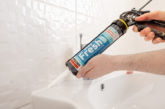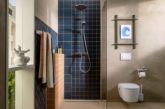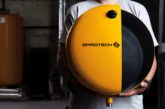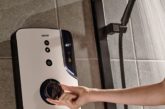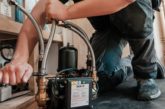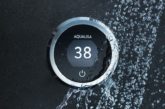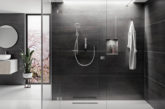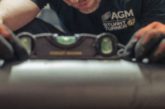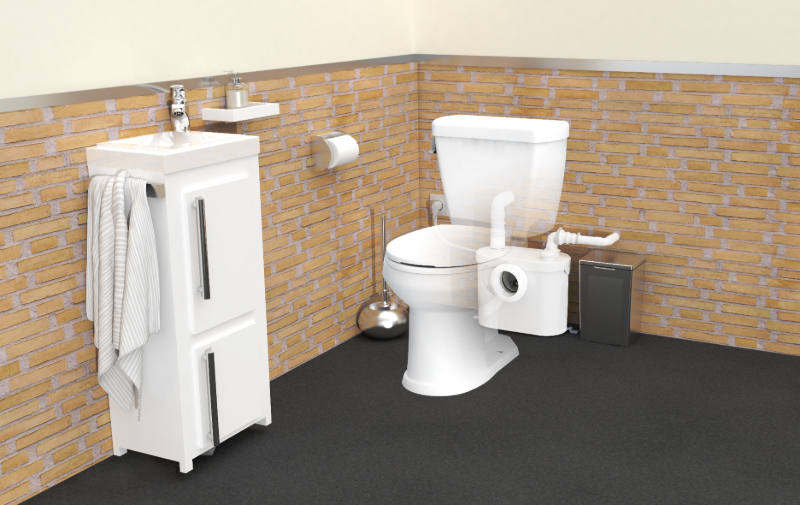
Macerator pumps, such as those offered by Saniflo, provide versatile solutions for various plumbing challenges. Paul Smith, Marketing Product Specialist at Saniflo, answers some questions about the company’s range of products.
Q: In what kind of circumstances should a plumber consider using macerator pump?
Plumbers should consider installing macerator pumps when traditional gravity-fed plumbing is impractical or impossible. This includes scenarios where the desired location of a new bathroom, kitchen, or laundry room is below or distant from the main sewer line, such as in basements, loft conversions, or outbuildings.
Macerator pumps are also ideal for adding facilities in areas where excavating floors to install new drainage pipes would be disruptive or prohibitively expensive. By grinding waste into a fine slurry, these pumps enable the use of small-diameter pipework, simplifying installation and reducing the need for extensive remodelling.
Q: What plumbing connections are required?
Installing a macerator pump requires connections to the sanitary fixtures it will serve, such as toilets, sinks, showers, dishwashers or washing machines. The macerator unit is connected to these fixtures via standard inlet pipes.
The unit connects to small-diameter (typically 22mm to 32mm) PVC discharge pipes for waste discharge, which transport the macerated waste to the existing soil stack or sewer line. It’s essential to ensure that all connections are secure and leak-free. Additionally, the installation should comply with plumbing regulations to ensure proper operation and safety.
Q: Are any electrics needed?
Yes, macerator pumps require an electrical connection to operate. Depending on the model, they are typically powered by a standard 220-240V/50Hz household electrical supply and consume around 400W.
To enhance safety, it’s crucial to ensure that the electrical installation complies with regulations and is protected by an appropriate residual current device (RCD). Professional installation by a qualified electrician is recommended to ensure compliance and safety.
Q: Over what kind of distances can a macerator operate effectively?
The effective discharge distance of a macerator pump depends on the specific model and the installation layout. For instance, the Sanipack Pro UP can pump waste vertically up to five metres and 100 metres horizontally.
It’s important to note that vertical and horizontal discharge capabilities are interdependent; increasing vertical lift can reduce the allowable horizontal run and vice versa. Therefore, careful planning of the discharge route is essential to ensure optimal performance.
Q: Are macerators noisy?
The Saniflo macerator operates at a noise level comparable to a standard toilet flush. However, the exact decibel level can vary depending on the specific model and installation environment. Factors such as room size, shape, and materials (e.g. tiled surfaces) can all influence noise levels.
The latest range is designed to be 10dB quieter than previous models, offering a noticeable reduction in noise. Proper installation is also key to minimising sound transmission. To prevent vibration-related noise, ensure that:
– The macerator does not come into direct contact with walls
– Anti-vibration pads are placed beneath the unit
– Discharge piping is securely mounted at appropriate intervals.
For additional soundproofing, consider adding a layer of insulation between the macerator and the floor or wall. Following these steps will help create a quieter and more discreet installation.
Q: Do they require any maintenance?
Macerator pumps are designed for minimal maintenance. However, to ensure longevity and optimal performance, regular cleaning and descaling is recommended, especially in areas with hard water.
Saniflo offers a specially formulated descaler that removes scale build-up without damaging the unit’s internal components. It is advisable to perform this maintenance every three to six months, depending on water hardness and usage. Additionally, users should avoid disposing of inappropriate items, such as sanitary products or wet wipes, into the system to prevent blockages and damage.
Q: Can a macerator operate with a concealed cistern?
Yes, macerator pumps can be installed to work with concealed cisterns, making them suitable for modern bathroom designs that favour minimalist aesthetics. The Sanipack Pro UP, for example, is specifically designed for use with wall-hung toilets and fits discreetly within fitted bathroom furniture, allowing for a sleek and unobtrusive installation.
The versatile Saniwall Pro UP is a built-in frame system with an integrated Saniflo macerator that can take waste from a WC, a wash basin and shower. This concealed unit is ideal for use with built-in bathroom furniture and wall-hung WC’s and features Grohe cistern technology. There are four models, one that can be tiled to match any bathroom décor, a second that has an elegant glass covering and two versions that have a wall covering provided one in carrara marble and on in concrete grey.
Q: Can basins and/or showers also be connected to a system?
Saniflo has a comprehensive range of macerators, pumps and lifting stations that are designed to handle waste from multiple sanitary fixtures. Some of the larger models – such as the Sanicubic range – can take the waste from commercial buildings, whilst the Sanifos range can be sited underground, outside to discharge the waste from single or multiple small buildings, such as log cabins or glamping pods or can be used for extensions or home offices in the garden.
For the creation of complete bathroom installations there’s a variety of models depending on the size and nature of the job. Larger models, such as the Sanibest Pro UP has been designed for high use areas and can take waste from a range of bathroom fittings, whilst at the smaller end, the Sanitop UP will take the waste from a WC and basin. Understanding the combined flow rate is key to ensuring the correct product is specified.
Q: Are there any solutions with built-in pumps?
Yes, Saniflo offers units with built-in macerator pumps. The Sanicompact, for instance, is a standalone WC with an integrated macerator pump, eliminating the need for a separate cistern. This compact design is ideal for installations where space is limited, such as under staircases or in small en-suites. The unit connects directly to the water supply and requires only small-diameter discharge pipe, simplifying installation.
The Saniflush is a complete ceramic toilet with built-in macerator with easy access to the macerator pump via a sliding ceramic section. The classic and timeless design ensures it is a modern solution for bathrooms that require a pumping solution. It can also take waste from a basin and shower.
Q: What kind of warranty is available?
Saniflo provides a standard 2-year warranty on all devices, covering both parts and labour, provided the product is installed and used correctly. For added peace of mind, select models are eligible for an extended warranty taking it to 5-years when registered within three months of installation. These models include:
– Saniflo Up
– Sanitop Up
– Sanipack Pro Up
– Sanipro Up
– Saniplus Up
– Saniwall Pro Up
– Sanivite+
– Sanishower+
– Sanispeed+
Registering a product ensures long-term support and protection and the ultimate peace of mind. Saniflo is currently offering installers a free gilet with the registration of a Saniflo pump or macerator to encourage warranty take up. The offer expires at the end of April, terms and conditions apply.


